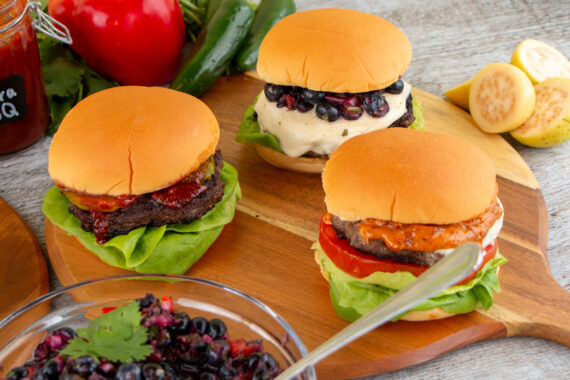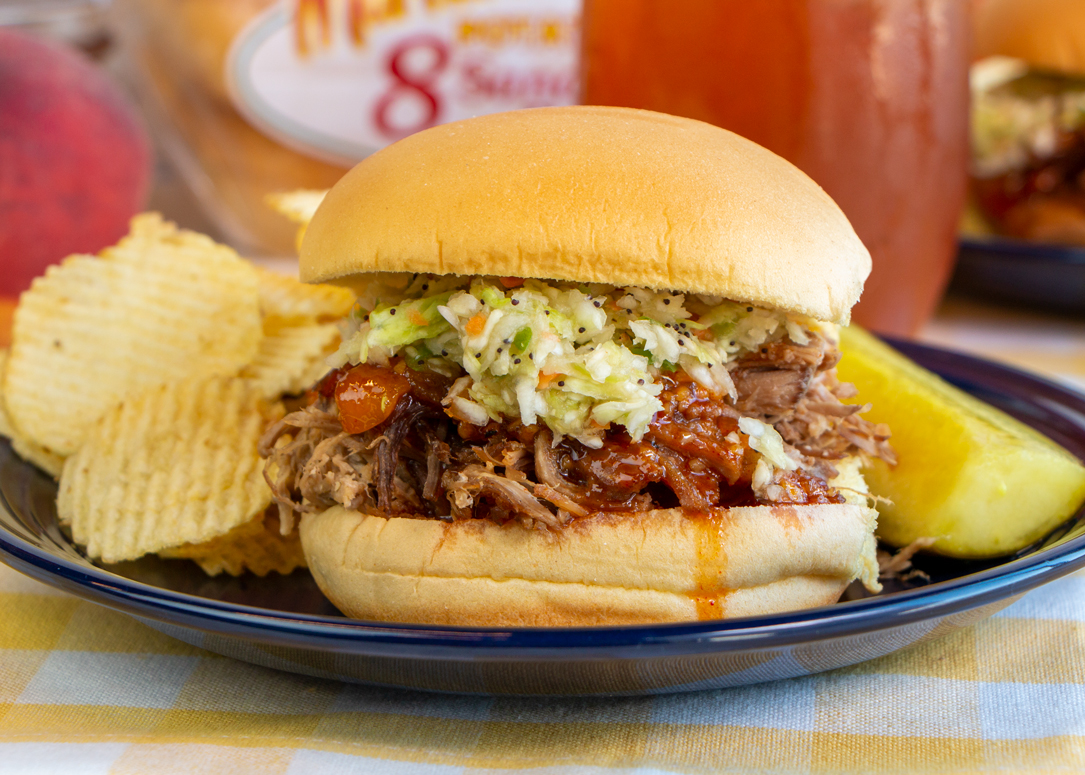
Can you believe we’re already halfway through Barbecue Month?! Hopefully, you’ve had a chance to fire up your outdoor grill or smoker and get cooking. But, if not, the warmer weeks leading up to summer cookout season are a great time to start! As a quick reminder—throughout the month of May, we’re bringing you weekly tips and resources on all things BBQ.
To recap:
- On Week 1, we shared with you some barbecue quick facts along with cooking tutorials for both professional (BBQ Smoker) and beginner (Slow Cooker) methods of preparing BBQ.
- Then, last week, we sent you on a journey through the history of barbecue in America and invited you to sample the various regional styles of this smoky cuisine from across the country.
(Stay tuned next week when we introduce you to some of our favorite BBQ restaurants and pitmasters!)
This week: we’re on the hunt to find the best topping for a BBQ sandwich, with a bit of a Martin’s twist! But first—let’s dive into a brief overview of the classic elements that go into building better barbecue.
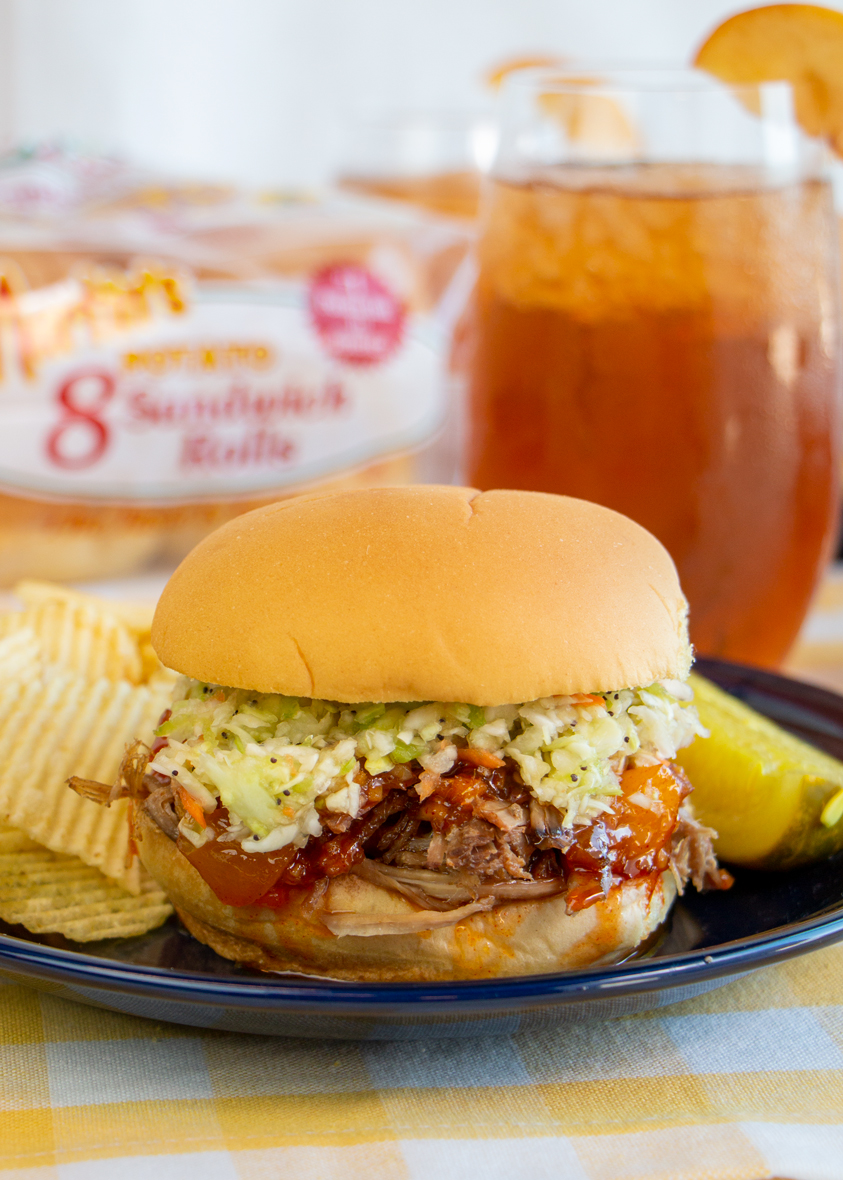
About BBQ Rubs and Marinades
The first technique used to impart flavor into barbecued meats is the use of a rub, marinade, or similar mixture before/during the cooking phase. The preferred type of rub, and optional use of a basting sauce, is a hotly debated topic among pitmasters, but you should feel free to use whichever method offers your ideal barbecue characteristics.
Here are some of the most popular BBQ preparations:
- Dry Rub: A blend of dried spices and seasonings used to enhance the flavor of the meat while helping to achieve a crispy crust or “bark” on the barbecued meat. A standard dry rub consists of brown sugar, salt, pepper, paprika, garlic powder, onion powder, and cayenne, with optional add-ins such as cumin, celery seed, and mustard powder.
- Wet Rub: A dry rub with the addition of a liquid element such as vinegar or oil, formed into a paste-like substance and applied in an even layer onto the meat. This method often helps the seasoning adhere better to the surface of the meat and may also help to add additional moisture to the meat.
- Binder: A binder is sometimes applied to the meat prior to adding the dry rub to help the seasoning adhere to the meat and form a better bark. Some common binders are yellow mustard, olive oil, ketchup, water, and mayonnaise.
- Brine: A saltwater solution used to prepare meat (especially poultry) prior to cooking. Brining may help improve the flavor and moisture level of the meat, the quality of the smoke, and help to regulate the temperature.
- Marinade: A flavored liquid used to prepare meats prior to cooking. Marinades add extra flavor and may help to tenderize the meat. Common marinades include ingredients such as oil, vinegar or citrus juice, herbs, spices, and seasonings.
- Mop Sauce: A thin, watery sauce used to baste the meat occasionally throughout the cooking process to help add flavor and moisture, improve bark, and enhance the smoke. Mop sauce usually consists of vinegar with optional spices such as red pepper flakes, sugar, paprika, mustard, garlic, and black pepper.
The above methods each have their own merits, but the choice is up to you—the pitmaster! Whether you’re new to barbecuing, or looking to perfect your technique, try experimenting with various BBQ preparations the next time you cook beef brisket, pork shoulder, BBQ chicken, or ribs.
Tip: for an example of a BBQ dry rub, check out our Ultimate BBQ Brisket Sandwich recipe.

About BBQ Sauces
Once your barbecue is cooked and finished resting, the next important step is to choose your BBQ sauce. As we learned last week, various regions of the U.S. have their own preferred style and flavor of BBQ sauce. However, we love to mix and match options and try unique flavor combinations. In fact, many BBQ restaurants will offer several sauce options for their customers to choose from.
Here is a breakdown of the basic types of BBQ sauce:
- Vinegar-based: Thin and spicy, this type of sauce commonly found in North Carolina is made with white or cider vinegar and red pepper flakes or ground cayenne pepper. Some variations may also include ingredients such as brown sugar, salt, black pepper, tomato sauce/ketchup, and hot sauce. It is frequently served with pork and may also be used as a mop sauce. Variations include Eastern Carolina vinegar & pepper sauce and Western Carolina (a.k.a. Piedmont or Lexington) vinegar and ketchup based sauce.
- Tomato-based: Perhaps the most recognizable style of BBQ sauce, this sauce tends to be thicker and sweeter due to the use of tomato sauce or ketchup and ingredients like brown sugar or molasses. It also contains other ingredients such as vinegar, garlic powder, onion powder, mustard, salt, pepper, or cayenne. This type of sauce pairs well with just about any form of barbecue. Included in this category are regional variations like Kansas City and Memphis BBQ sauces.
- Mustard-based: This tangy sauce, which is the signature style of South Carolina, includes yellow mustard, brown sugar, vinegar, and additional spices and seasonings. Similar to its northern counterpart, this sauce is frequently paired with pork barbecue.
- Mayonnaise-based: This iconic white BBQ sauce, unique to Alabama, is typically made with mayonnaise, vinegar, lemon juice, black pepper (and occasionally horseradish), along with various other spices. Unlike the other three sauces, this variety is most often paired with barbecued chicken.
If you prefer to make your own barbecue sauce from scratch, check out the recipe links above to test out the different regional variations, or try experimenting with alternate flavors and ingredients!
Martin’s Custom BBQ Sauce Recipe: Peach Barbecue Sauce
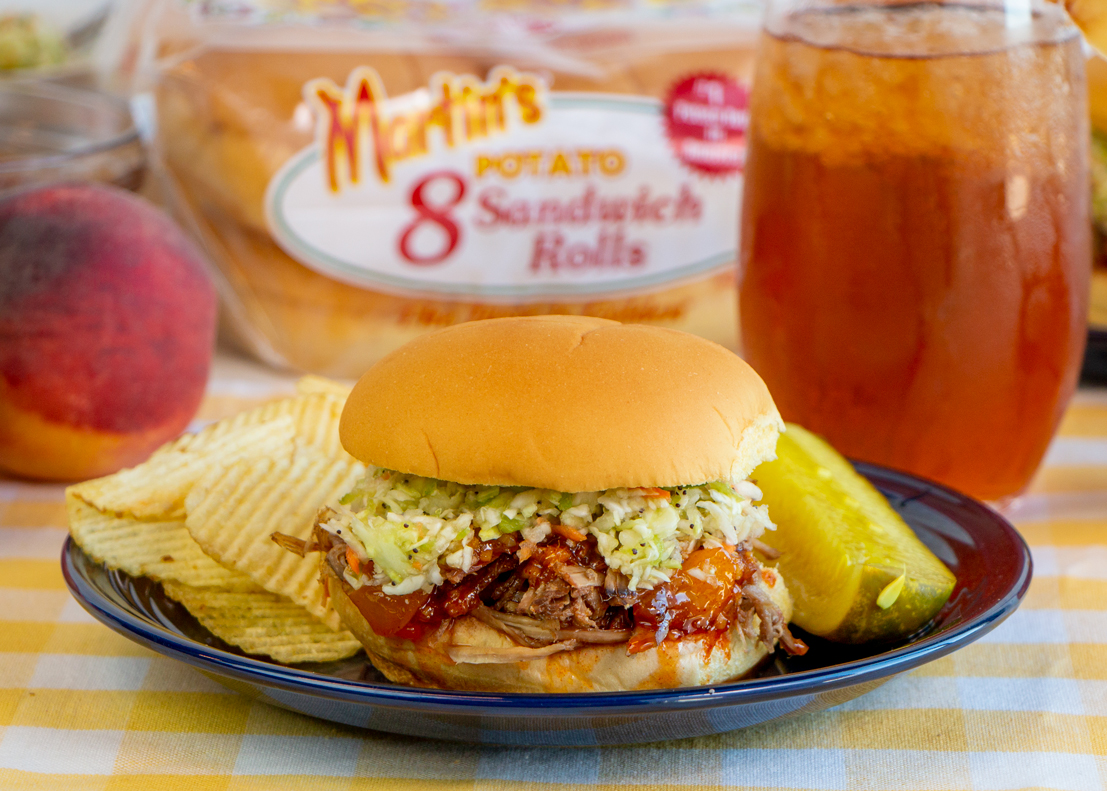
Speaking of experimenting with flavors…we decided to customize our own BBQ sauce for this week’s featured recipe! Did you know that Martin’s hometown of Chambersburg, PA is famous for its juicy ripe peaches? Well, to add a touch of home into our sauce recipe, we chose to incorporate some homemade peach preserves and freshly diced peaches. The fresh fruit, along with some orange juice and cider vinegar, adds a delightful citrusy flavor and smooth consistency to our sauce and pairs extremely well with our pulled pork sandwich.
How to Make Homemade Peach Barbecue Sauce:
Ingredients
- 1 Teaspoon Olive Oil
- 4 Cloves Fresh Garlic, minced
- 2 Tablespoons Fresh Ginger, minced
- ¼ Cup Orange Juice
- 1 Cup Peach Preserves
- ½ Cup Peaches, finely chopped
- 2 Tablespoons Apple Cider Vinegar
- ½ Cup Brown Sugar
- 3 Tablespoons Brown Mustard
- 1 Tablespoon Smoked Paprika
- 2 Teaspoons Kosher Salt
- ¼ Teaspoon Chili Flakes
Directions
- Add olive oil, garlic, and ginger to medium sauce pan over medium heat. Cook for about 3 minutes, stirring often.
- Whisk in orange juice, peach preserves, peaches, apple cider vinegar, brown sugar, brown mustard, smoked paprika, salt, and chili flakes. Bring mixture to a boil, whisking often.
- Lower to simmer and cook 10 minutes, whisking often, scraping sides and bottom of pan. Remove from heat and cool slightly. Place in a sealed container in the refrigerator until ready to use.
BBQ Sauce Taste Test
Don’t have the time or ingredients on hand to make your own BBQ sauce? The good news is that there are so many great sauce brands out there, spanning all the different types of sauces we outlined above (and then some!) Take a look through the sauce aisle in your local grocery store and pick up some unique varieties to sample.
Martin’s Sales and Marketing Team recently did a taste test of our own! We asked our BBQ friends, restaurant customers, and some other local brands to send us their best custom sauces, then sampled a variety of them to gather some feedback. Watch the video below to hear what our team thought of 13 different BBQ sauces from all across the East Coast and Texas!
Want to try these sauces for yourself? Check out the below list of sauce options from some friends of Martin’s Potato Rolls & Bread see what you think!
- Bar-B-Que Beast
- Carolina Beast
- Curry Beast
- Hot Beast
- On the Bay Beast
- Original Beast
- Spicy Beast
- Burger Beast
- Guava Sriracha Ketchup
- Dinosaur Bar-B-Que
- Hot Honey Gold
- Red Chili Sour Cherry
- Sensuous Slathering Sauce
- Daddy Bob’s Barbeque
- Eastern Style Vinegar Sauce
- Franklin Barbecue
- Original Texas BBQ Sauce
- Spicy BBQ Sauce
- Vinegar BBQ Sauce
- Leroy and Lewis
- Beet BBQ Sauce
- Hog Sauce
- Pappy Jay’s
- Original Bar-B-Q Sauce
- Pig Beach
- Ocean Front Hot BBQ Sauce
- Rob’s Righteous Red BBQ Sauce
- Tangy Vinegar Mild BBQ Sauce
- World Champion Mustard BBQ Sauce
- Valentina’s
- Tex Mex BBQ Sauce
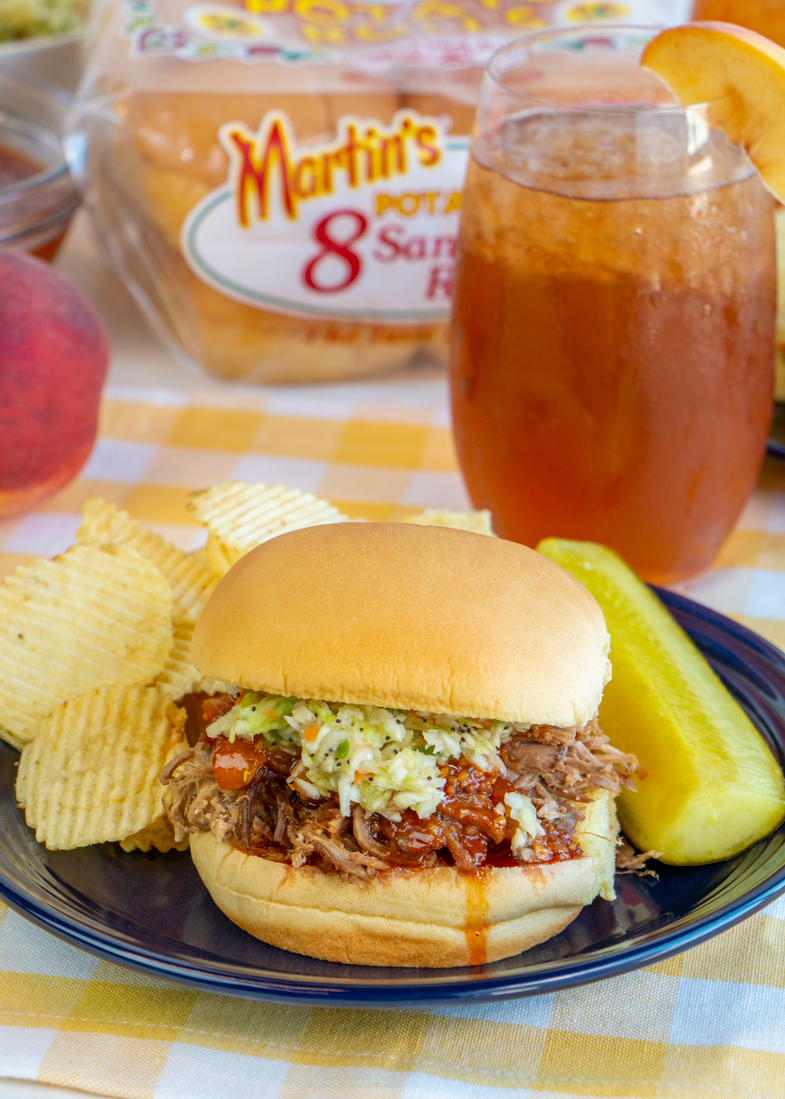
About BBQ Toppings
Once you have chosen your barbecue meat and sauce options, it’s time to decide on the toppings! If you’ve ever been to a BBQ restaurant before, you’ve likely been served the iconic steel tray lined with peach-colored butcher paper, piled high with various meats, sauces, sides, and toppings.
Here are a few of our favorite “bonus” toppings for BBQ:
- Pickles
- Raw or Pickled Onions
- Bacon
- Hot Sauce
- Cheese
- Fried Onion Straws
- Jalapeno
- Honey Mustard
- Coleslaw
- Corn Salad
- Baked Beans
- Mac and Cheese
- Corn Chips
Some of the best flavor pairings for rich, meaty barbecue are the slightly acidic, tangy ingredients like pickles, pickled onions, or vinegar-based coleslaw, because they help to cut through the fat and add a nice balance of flavors. Fresh veggies like onions or hot peppers can also help to add a contrast of textures and varying flavor profiles.
And don’t forget the side dishes! Classic barbecue accompaniments like baked beans, mac & cheese, and grilled corn also make great toppings for a pulled pork or brisket sandwich. Check out our DIY BBQ Bar for an extensive list of topping and condiment ideas!
Bonus Tip: Use these ingredient ideas to build your own BBQ Party Platters!
Martin’s Custom Slaw Recipe: PA Dutch Pepper Slaw
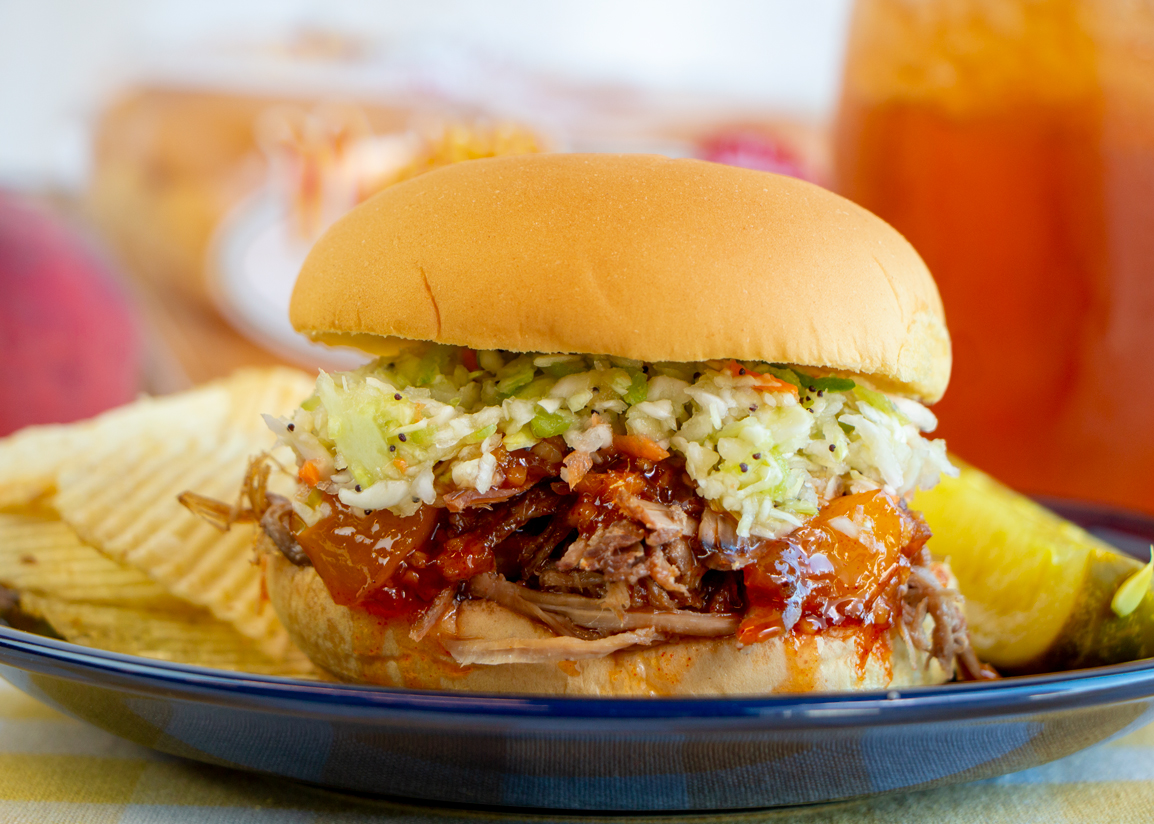
As with our homemade sauce above, we also wanted to craft a custom toppings component that is unique to Martin’s heritage. Chambersburg, PA is located within “Pennsylvania Dutch Country,” named for the German influence of its early settlers. A famous type of coleslaw in this region is called Pepper Slaw, which consists of shredded cabbage, finely diced bell peppers, grated carrots, and a vinegar-based dressing. The fresh crunch from the veggies and the slightly tangy slaw is the perfect pairing for our fruity BBQ sauce and hearty pulled pork!
How to Make Homemade PA Dutch Pepper Slaw:
Ingredients
- ¾ Cup Apple Cider Vinegar
- 1 Cup Sugar
- ¼ Cup Water
- 1 Teaspoon Celery Seed
- 1 Teaspoon Dry Mustard
- 2 Teaspoons Salt
- 1 Medium Head Green Cabbage, finely chopped
- 1 Medium Carrot, finely grated
- 2 Bell Peppers, finely chopped
Directions
- In a medium saucepan, combine vinegar, sugar, water, celery seed, mustard, and salt. Bring to a boil, stirring continuously until sugar is dissolved. Remove from heat and allow to cool.
- Place cabbage, carrot, and peppers into a large bowl. Once dressing has cooled, combine with vegetables and stir well. Refrigerate slaw until ready to serve.
Try your hand at our custom slaw recipe or make it your own by mixing in other seasonings or extra pickled elements. Or, if you want to continue on the regional barbecue route, check out these five coleslaw variations that mirror a few of the BBQ sauce styles we mentioned above.
Note: You may also enjoy our Tangy Pickle and Onion Slaw!
The Finishing Touches
And there you have it! A customized BBQ sauce and homemade coleslaw to go with your handcrafted barbecue masterpiece. Prepare the pulled pork using your preferred cooking method, pile it into a Martin’s Sandwich Potato Roll, and top it with your homemade sauce and slaw, then dig in!
Get the full recipe: https://potatorolls.com/recipes/pulled-pork-sandwich-with-peach-bbq-sauce-and-pepper-slaw
Martin’s Summer Fun Season
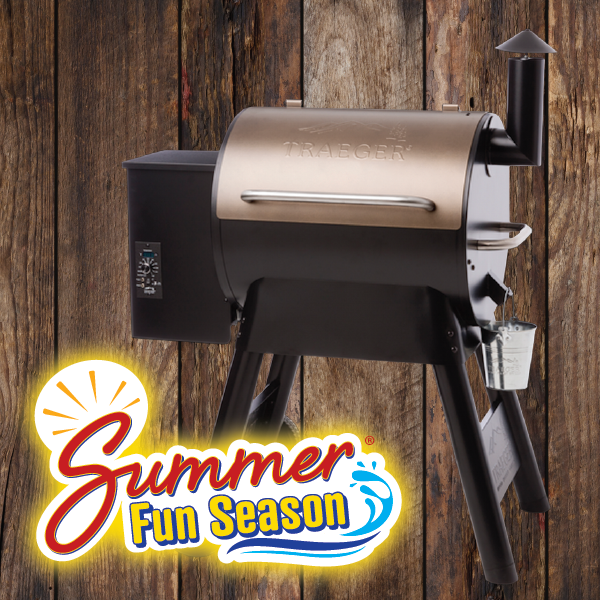
Reminder: We’re giving away a Traeger Pellet Smoker over at www.MartinsSummerFun.com. Be sure to stop by and enter for your chance to win—from now until May 31.
Our latest content, delivered straight to your inbox.
Be the first to hear about our newest recipes, tips, and company updates!



